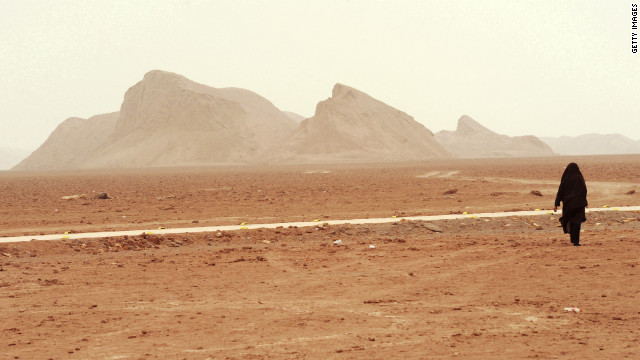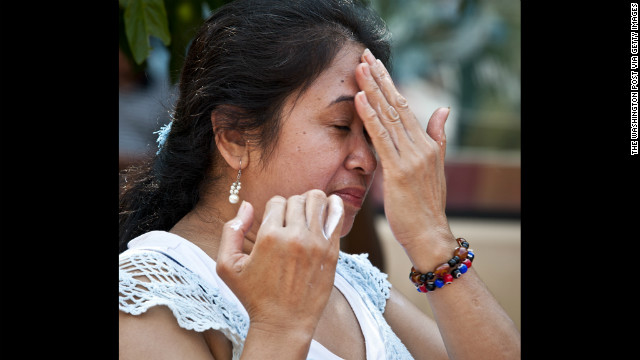
STORY HIGHLIGHTS
- Doctors say the inappropriate use of steroids worsened many cases
- No new cases of the condition have been confirmed since last Saturday
- The pathogens include enterovirus 71, streptococcus suis and dengue
- Most of the patients have come from southern Cambodia
A combination of
pathogens, disease-causing micro-organisms, is to blame for the illness,
the World Health Organization, in conjunction with the Cambodian
Ministry of Health, has concluded, the doctors said.
The pathogens include
enterovirus 71, which is known to cause neurological disease;
streptococcus suis, which can cause infections like bacterial meningitis
in people who have close contact with pigs or with pork products; and
dengue, which is transmitted by mosquitoes.
The inappropriate use of
steroids, which can suppress the immune system, worsened the illness in a
majority of the patients, the doctors said. The World Health
Organization (WHO) is expected to advise health care workers to refrain
from using steroids in patients with signs and symptoms of the
infection, which include severe fever, encephalitis and breathing
difficulties.
While not all the
microorganisms were present in each patient, doctors concluded the
illness was caused by a combination of them and worsened by steroid use.
The WHO sources did not
want to be identified because the results of the health organization's
investigation have not yet been made public.
"I'm very confident for
the reason of the epidemic," said Dr. Phillipe Buchy, chief of virology
at the Institut Pasteur in Cambodia and one of the doctors who cracked
the case.
"The first thing that
goes through your mind is, is this one of the usual suspects you haven't
detected before?" said Dr. Arnaud Tarantola, chief of epidemiology and
public health at the Institut Pasteur. "If it is, has it mutated, or
changed in a way that it causes more severe disease? Or is it something
completely new?"
On the steroids issue,
Tarantola said, "When you have a dying child, you try to use what you
have at hand, and they were right to try that." But, he acknowledged,
"from the cases we reviewed, almost all of the children died, and almost
all of them had steroids."
"I think we can close
the case and move ahead asking different questions," Buchy said. "Not
what is the illness, but now, how long has the virus been circulating?
What is the extent of the circulation of the virus? How many mild
diseases are we missing? That's the next step."
Over the past four
months, doctors at Kantha Bopha Children's Hospitals in Phnom Penh have
been faced with the mysterious syndrome, which kills children so fast
that nearly all of those infected with it die within a day or two of
being admitted to the hospital.
Dr. Beat Richner, head
of the children's hospitals -- which cared for 66 patients affected by
the illness, 64 of whom died -- said that no new cases of the illness
had been confirmed since Saturday.
Other hospitals in the
country have reported similar cases, but far fewer than the children's
hospitals in the capital, which are the most popular.
In the last hours of
their life, the children experienced a "total destruction of the
alveola(e) in the lungs," Richner said. Alveolae are the air sacs where
oxygen enters the bloodstream.
Most of the children who
have contracted the illness have come from the south of the country,
though health officials cannot find what is known as a cluster -- a lot
of cases coming from one specific area.
By June 29, the WHO had
been contacted and Cambodian officials were scrambling to instruct
health providers across the country to spread information about the
illness as quickly as possible.
The WHO and the
Cambodian authorities' announcement of the situation drew criticism from
Richner, who said they were "causing unnecessary panic."
The WHO said the unexplained nature of the outbreak obliged it to communicate the information.
Over the weekend, lab
tests linked enterovirus 71 (EV71) to some of the cases. But the tests
didn't solve the whole puzzle and health officials continued their
investigations, noting the detection of other elements like
streptococcus suis and dengue.
The link to EV71 does
not particularly help in the treatment of the illness, as there is no
effective antiviral treatment for severe EV71 infections and no vaccine
is available.
In milder cases, EV71
can cause coldlike symptoms, diarrhea and sores on the hands, feet and
mouth, according to the journal Genetic Vaccines and Therapy. But more
severe cases can cause fluid to accumulate on the brain, resulting in
polio-like paralysis and death.
Outbreaks of the
enterovirus "occur periodically in the Asia-Pacific region," according
to the CDC. Brunei had its first major outbreak in 2006. China had an
outbreak in 2008.
Adults' well-developed immune systems usually can fend off the virus, but children are vulnerable to it, according to the CDC.
"It looks like (EV71)
has emerged strongly, probably because it hadn't circulated with the
same intensity in the past years," Tarantola said.
Reported cases of streptococcus suis have risen significantly in recent years, notably in Southeast Asia, according to a paper that appeared last year in Emerging Infectious Diseases, a journal published by the Centers for Disease Control and Prevention in Atlanta.
The rainy season in
Cambodia, which lasts from May to October, is a key problem in trying to
control diseases like dengue. Because of a lack of indoor plumbing in
many homes, people collect rainwater in vats, creating potential
breeding grounds for mosquitoes.
In Cambodia, as with
many places around the world, parents first try treating their child at
home. If that doesn't work, they typically then go to a local clinic. A
hospital visit, which often involves a long trip, is a last resort.





 Skip the Soup, Order the Salad
Skip the Soup, Order the Salad Stop Drinking Sugar
Stop Drinking Sugar Crack Open Some Nuts
Crack Open Some Nuts Explore Your Environment
Explore Your Environment Above All, Remember That There’s Life After Retirement
Above All, Remember That There’s Life After Retirement











